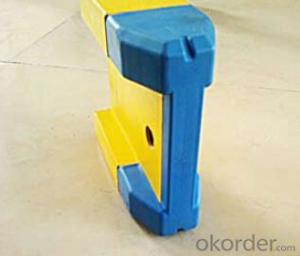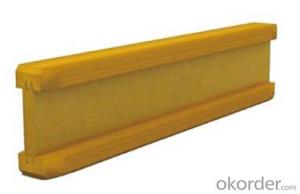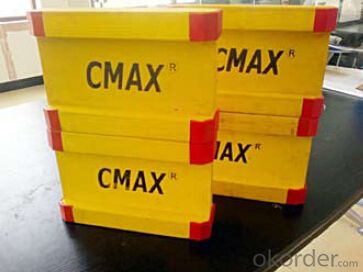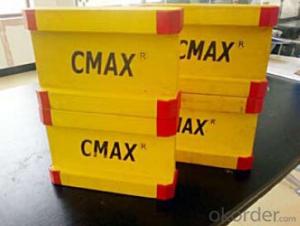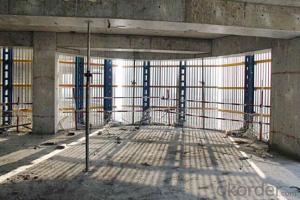Timber- Beam for Formwork and Scaffolding system
- Loading Port:
- Tianjin
- Payment Terms:
- TT OR LC
- Min Order Qty:
- 50 m²
- Supply Capability:
- 1000 m²/month
OKorder Service Pledge
OKorder Financial Service
You Might Also Like
Characteristics:
◆ Standardized production lines.
Supply capability: 3000m/day, Lmax = 6600mm.
◆ Finger jointing of the flange and web, the strength of timber beam is highly improved.
Max. shearing force failure load:40KN
◆ Well treated to prevent from water penetration or erosion, so the service life maximally extended.
Normally, CNBM timber beam H20 can be used for 4 to 5 years, the exact using time would depend on maintenance & storage.
◆ Robust caps at the end of the girders protect against damages.
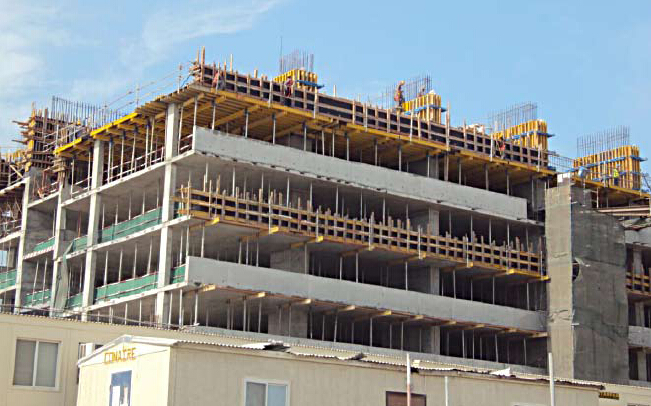
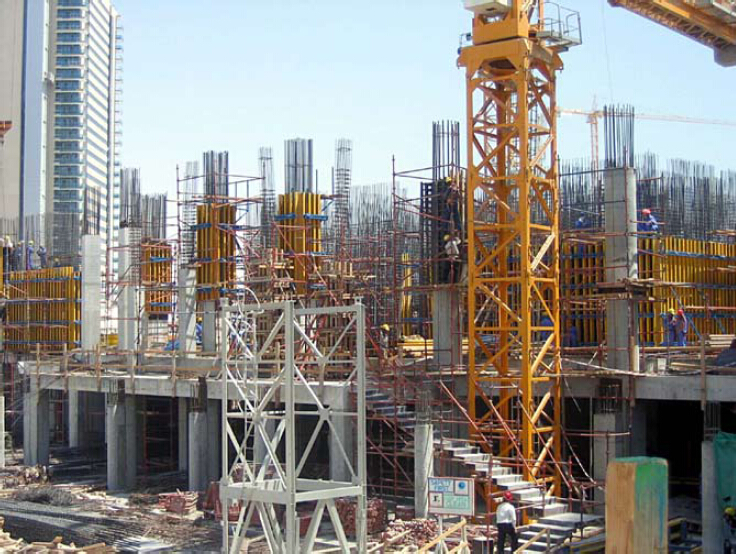
- Q: Can steel formwork be used for pier caps?
- Yes, steel formwork can be used for pier caps. Steel formwork offers several advantages such as high strength, durability, and reusability. It can provide a smooth and precise finish to the pier caps, ensuring a high-quality end result. Additionally, steel formwork can be easily assembled and disassembled, allowing for efficient construction processes. Therefore, steel formwork is a suitable choice for constructing pier caps, as it can provide the necessary support and structural integrity required for this application.
- Q: How does steel formwork affect the overall quality control of a construction project?
- Steel formwork can have a significant impact on the overall quality control of a construction project. Firstly, steel formwork provides a higher level of precision and accuracy compared to other types of formwork materials such as wood or plastic. This enables construction teams to achieve more precise dimensions and shapes, resulting in a higher quality finished product. Additionally, steel formwork offers better durability and stability, which reduces the risk of deformations or damages during the concrete pouring process. This ensures that the final structure maintains its integrity and structural stability over time. The use of steel formwork also minimizes the occurrence of surface imperfections, such as cracks or unevenness, which can significantly affect the aesthetic appearance and overall quality of the construction project. Furthermore, steel formwork allows for faster construction cycles, as it is reusable and can be easily assembled and dismantled. This not only saves time but also helps to maintain consistency in the construction process, leading to improved quality control. The ability to reuse steel formwork also reduces waste and environmental impact, promoting sustainable construction practices. Another important aspect of steel formwork is its ability to withstand high pressures and loads, making it suitable for constructing complex structures and high-rise buildings. This strength and stability contribute to the overall safety and resilience of the construction project, further enhancing its quality control. In conclusion, steel formwork positively affects the overall quality control of a construction project by offering precision, durability, stability, speed, and safety. Its use ensures that the construction project meets the desired standards, resulting in a high-quality final product that meets both functional and aesthetic requirements.
- Q: How does steel formwork contribute to the overall speed of construction?
- Steel formwork contributes to the overall speed of construction by providing a durable and reusable solution for creating concrete structures. The use of steel formwork allows for faster and more efficient construction processes as it can be easily assembled and disassembled, reducing the time required for formwork installation and removal. Additionally, steel formwork provides a smooth and consistent surface, resulting in faster curing times and improved productivity.
- Q: How does steel formwork affect the overall sound insulation of a building?
- Steel formwork does not directly affect the overall sound insulation of a building. However, it can indirectly impact sound insulation by influencing the type and quality of materials used for insulation purposes. The choice of materials for sound insulation, such as the selection of appropriate insulation panels or acoustic barriers, will have a greater impact on the overall soundproofing performance of a building.
- Q: Can steel formwork be used in retail or commercial construction projects?
- Retail or commercial construction projects can benefit greatly from the use of steel formwork. This versatile and durable solution is ideal for creating concrete structures, offering numerous advantages. With its high reusability, excellent dimensional stability, and ability to handle high concrete pressures, steel formwork is a reliable choice. In these types of projects, steel formwork can be utilized for various applications including columns, walls, beams, slabs, and staircases. It provides a strong framework, ensuring accurate and smooth concrete placement, resulting in top-notch finishes. Moreover, steel formwork can be easily customized and adjusted to meet different project requirements, making it suitable for complex architectural designs. In addition to its flexibility, steel formwork also brings significant time and cost savings to construction projects. Its reusability minimizes the need for frequent formwork replacements, leading to reduced material and labor costs. The use of steel formwork further enhances construction efficiency by allowing for quick assembly, disassembly, and repositioning of formwork components. Overall, steel formwork is a dependable and efficient choice for retail or commercial construction projects, providing the necessary strength and flexibility for such applications.
- Q: Can steel formwork be used for theater construction projects?
- The utilization of steel formwork is applicable to theater construction projects. Steel formwork is composed of temporary or permanent molds constructed from steel, which are employed to mold and support concrete during the construction phase. It is a highly adaptable and long-lasting material that can be utilized for various construction endeavors, including theater construction. The utilization of steel formwork presents several advantages for theater construction projects. Firstly, it provides a considerable amount of strength and stability, guaranteeing that the concrete structures created for theaters are robust and durable. This is of utmost importance in theaters, where safety is a primary concern due to the large gatherings of individuals in these spaces. Furthermore, steel formwork permits the achievement of intricate and complex designs, which are often necessary for theater construction. The malleability of steel formwork enables the creation of personalized shapes, curves, and patterns, enabling architects and designers to bring their innovative visions to fruition. Additionally, steel formwork is reusable, thus making it a cost-effective option for theater construction projects. In contrast to traditional wooden formwork, which must be replaced after a single use, steel formwork can be employed multiple times, resulting in reduced material and labor expenses. Lastly, steel formwork facilitates a faster construction process. Its simple assembly and disassembly hasten the construction timeline, allowing theater projects to be completed within a shorter timeframe. In conclusion, steel formwork is a suitable selection for theater construction projects due to its strength, adaptability, flexibility, reusability, and efficiency. It offers numerous benefits that contribute to the successful and timely completion of theater construction projects.
- Q: Can steel formwork be used in areas with high seismic activities?
- Indeed, areas with high seismic activities can utilize steel formwork. Renowned for its strength and durability, steel proves to be an appropriate construction material in earthquake-prone regions. The resilience of steel formwork against lateral forces and seismic vibrations guarantees the structure's safety and stability. Moreover, steel formwork offers exceptional flexibility, allowing for tailored construction solutions to accommodate diverse shapes and sizes in high seismic areas. Ultimately, steel formwork emerges as a dependable and efficient choice for construction endeavors in regions characterized by high seismic activities.
- Q: How does steel formwork contribute to the sustainability of a construction project?
- Steel formwork contributes to the sustainability of a construction project in several ways. Firstly, steel formwork is highly durable and has a long lifespan. This means that it can be used for multiple construction projects, reducing the need for new formwork and minimizing waste. Additionally, the durability of steel formwork reduces the need for frequent repairs or replacements, saving both time and resources. Secondly, steel formwork is a reusable material. It can be easily disassembled and reassembled for use in different projects, reducing the demand for new formwork and minimizing the amount of waste generated. This significantly reduces the environmental impact of construction projects, as it reduces the need for new materials and decreases the amount of waste sent to landfills. Furthermore, steel formwork is highly efficient and allows for faster construction times. Its strength and stability enable the construction process to progress more quickly, reducing the overall duration of the project. This not only saves time but also reduces the energy consumption associated with construction activities, contributing to the overall sustainability of the project. Moreover, steel formwork is a recyclable material. At the end of its lifespan, the steel formwork can be recycled, further reducing its environmental impact. Recycling steel requires less energy and resources compared to manufacturing new steel, thus reducing greenhouse gas emissions and conserving natural resources. In summary, steel formwork contributes to the sustainability of a construction project by being durable, reusable, efficient, and recyclable. It reduces the need for new formwork, minimizes waste generation, saves construction time, and conserves resources. By incorporating steel formwork into construction projects, builders can significantly reduce the environmental impact while ensuring long-term durability and efficiency.
- Q: Can steel formwork be used for concrete walls and columns?
- Yes, steel formwork can be used for concrete walls and columns. Steel formwork is a popular choice for these applications due to its durability, strength, and reusability. It allows for precise shaping and alignment of concrete structures, resulting in a high-quality finish. Steel formwork can withstand the pressure exerted by wet concrete and provide the necessary support during the curing process. Additionally, it is resistant to warping, shrinking, and swelling, ensuring consistent results for multiple pours. However, it is important to consider the cost of steel formwork, as it is generally more expensive than other types of formwork.
- Q: What is the 86 series steel formwork
- If a large concrete pouring for the interruption or delay the closing fast and easy net is a kind of ideal material, it is a kind of preparation activities can form any emergency terminated required. The construction can be quickly restored, without dismantling work for temporary sealing end. Because of the use of quick and easy closing network can quickly build not included in the plan terminated, as a contingency measure. Customers can before large casting at the site to prepare some available will be attached, with concrete formwork for pouring the easy days after creating the ideal surface cementation.
Send your message to us
Timber- Beam for Formwork and Scaffolding system
- Loading Port:
- Tianjin
- Payment Terms:
- TT OR LC
- Min Order Qty:
- 50 m²
- Supply Capability:
- 1000 m²/month
OKorder Service Pledge
OKorder Financial Service
Similar products
Hot products
Hot Searches
Related keywords
